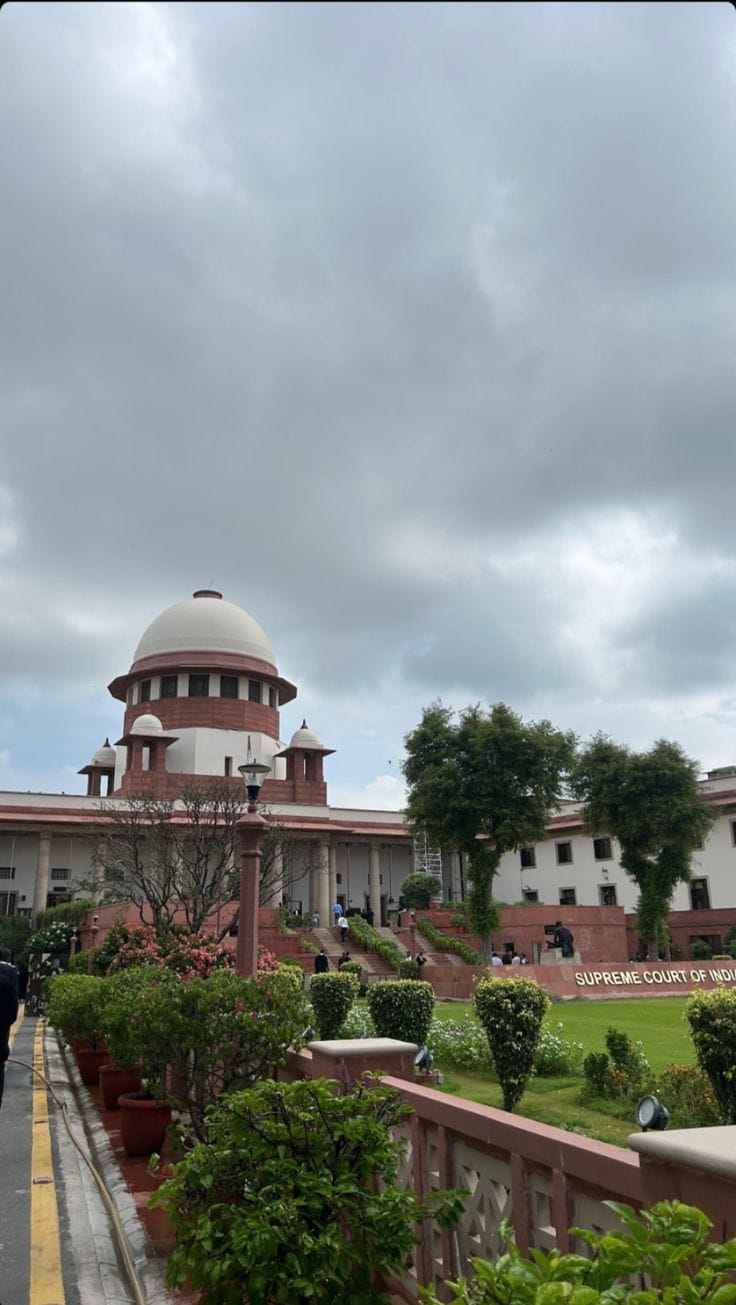
Man divides conflicting sides parties with a hand on scales. Avoidance violence, bullying. protection of witnqesses. Mediator services. Finding a compromise. Stop hot phase of war, ceasefire fight.
On July 18, 2025, Friday, the Supreme Court gave a historic ruling in BGM and M-RPL-JMCT (JV) Vs. Eastern Coalfields Limited, holding a determinative question whether agreement document to resolve a dispute by arbitration is necessary so that an arbitration agreement shall be enforceable as per Section 7 of the Arbitration and Conciliation Act, 1996. The Court held an enabling clause stipulating adjudication of a dispute by arbitration is not itself a binding agreement of arbitration and thus sustained the Calcutta High Court’s rejection of a request for appointment of an arbitrator.
Fact
The case arose due to the fact that there was a contract signed between BGM and Eastern Coalfields Limited (the respondent) and M-RPL-JMCT (JV) (the appellant) regarding commodity transport and handling. The agreement comprised a General Terms and Conditions and an e-tender notice, specifically, challenging Clause 13 which is “Settlement of Disputes.” The clause contemplated a hierarchical order of settlement of disputes, including recourse to company committees and subject to certain conditions, disputes with the non-government parties “may be sought through Arbitration and Conciliation Act, 1996 as amended.”
Arguments
Appellant:
For More Updates & Regular Notes Join Our Whats App Group (https://chat.whatsapp.com/DkucckgAEJbCtXwXr2yIt0) and Telegram Group ( https://t.me/legalmaestroeducators ) contact@legalmaestros.com.
• The appellant argued that the inclusion of Clause 13, even if there is the use of the term “may” always constitute an agreement to arbitrate, so much so that it is an option for both parties to seek arbitration with a view towards settling disputes. Once activated, it would be binding.
• It was also contended that in determining whether or not to make a Section 11 application, the Referral Court should limit itself to deciding merely a prima facie issue of whether or not there is an arbitration agreement and leave more subtle or arguable issues to the arbitral tribunal itself under Section 16 (“competence-competence” doctrine).
• The appellant criticized the High Court for applying the decisions in Jagdish Chander Vs. Ramesh Chander and Others and Mahanadi Coalfields Ltd. Vs. IVRCL AMR Joint Venture, claiming that all such types of dispute resolution clauses were employed.
Respondent:
• The respondent argued that the facilitative language (may) of Clause 13 did not amount to an existing consensus to resolve disputes by arbitration. Rather, it merely left open the hope of eventual agreement to arbitrate if either or both parties might elect at the time of dispute arising.
• It was emphasized in Clause 32 of the Instructions to Bidders, which had established the resolution of disputes at the district court and therefore expressed the consent of the parties to be determined by the court rather than arbitration.
• The respondent, thus, argued that no contract to arbitrate existed under Section 7 provisions because permission or possibility would not be an agreement to arbitrate but a binding obligation.
Judgement
The Supreme Court ruled the case by posing a conservative legal question:
• Threshold of Examination (Section 11): Referring to Constitution Bench in Interplay Between Arbitration Agreements under Arbitration, 1996 & Stamp Act, 1899, In re (2024), the court clarified that jurisdiction of Referral Court under Section 11 is limited to a prima facie determination whether there is or is not an arbitration agreement. The court avoided any rigorous scrutiny or “mini-trial” but inquired merely if on its face the questioned document evinced a binding arbitration agreement.
• Conditions of an Arbitration Agreement (Section 7): On the basis of Bihar State Mineral Development Corporation Vs. Encon Builders and Jagdish Chander Vs. Ramesh Chander, the Court emphasized the need for an absolute, binding promise to arbitrate previous or subsequent disputes. It put forward the argument that wording that merely indicates the possibility of arbitration or entails subsequent agreement of the parties is not sufficient to constitute binding arbitration agreements.
• Creation of Clause 13: The Court further observed that the statement “may be sought” is an enabling clause rather than a contractual clause. Therefore, the language did not bind either party to irrevocably submitting the matter to arbitration without the will of the two parties to arbitration in case there was any dispute. It only allowed parties, if they agreed between themselves in the future, to resort to arbitration.
• Function of Clause 32: It was contended by the respondent that Clause 32 conveyed jurisdiction exclusive to courts, but the Supreme Court clarified that Clause 32, by itself, did not exclude potential arbitration. It was actually used to determine the forum for the cases which were resolved in litigation.
On such premises, Supreme Court had held that there was no agreement for arbitration as contemplated by Section 7 between the parties. Appellant’s request for appointment of an arbitrator was thus, correctly rejected by the High Court. Appeal was dismissed without any order as to costs.
Analysis and Impact
This decision makes a bright-line distinction between provisions simply leaving arbitration one of the parties, open possibilities and provisions that establish an obligation of a binding nature. The Court reaffirmed the observation that in order to be an arbitration agreement, the parties must agree to resolve their disputes by arbitration, i.e., not simply to leave that an open possibility subject to eventual agreement. Extravagant use of “may” under such circumstances, with no words of obligation, will be ineffective. This decision has sweeping implications for the following reasons:
• Contract Drafting Implications: The decision leaves no doubt in the minds of contracting parties and draftsmen that they would need to employ binding and definitive language if they want disputes to be referable to arbitration compulsorily. Clauses using “may” or otherwise stating optionality would not be effective.
• Arbitration Law: The Court sustained the Referral Court’s limited jurisdiction to a prima facie ruling, thus, striking the balance between exclusion of the abusive claims, i.e., there is no valid arbitration agreement and arbitral tribunal’s jurisdiction under competence-competence principle to decide on its jurisdiction.
• Clarity in the Law: The ruling gives reassuring clarity regarding what will qualify as an enforceable arbitration agreement and reduces the potential for interpretive uncertainty and it enables parties to more confidently anticipate what courts will do when confronted with such advance objections.
Conclusion
By its control of the enforcement and adjudication direction that enabling clauses in themselves do not form arbitration agreements, the Supreme Court has ensured the sanctity of guaranteed dispute resolution mechanisms under the agreement as well as interpreted the scope of judicial intervention in the pre-reference stage under Section 11. The judgment reinforces the need for contractual clarity on the basis of substance over names or boilerplate general dispute resolution clauses. This practice shields parties from being compelled into arbitration without clear, direct decision.
Coram
Justice Pamidighantam Sri Narasimha
Justice Manoj Misra
Sources
1. BGM and M-RPL-JMCT (JV) Vs. Eastern Coalfields Limited 2025 INSC 874.
2. Jagdish Chander Vs. Ramesh Chander and Others (2007) 5 SCC 719.
3. Mahanadi Coalfields Ltd. Vs. IVRCL AMR Joint Venture (2022) 20 SCC 636.
4. Bihar State Mineral Development Corporation Vs. Encon Builders (2003) 7 SCC 418.




